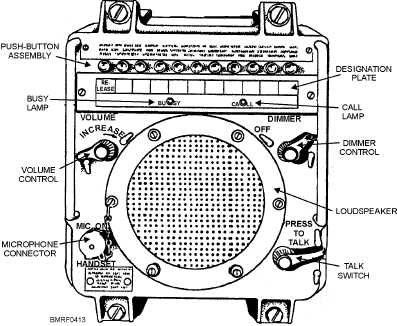The chief disadvantage of the intercom is that it
raises the noise level in any space in which it is located.
For this reason, it seldom is used when sound-powered
telephones are manned. Intercom circuits, which may be
located on the bridge, are identified briefly as follows:
20MC, combat information announcing system,
connects the same stations as the 1JS phones.
21MC, captain’s command announcing system,
is an approximate parallel to the JA phones.
22MC, radio room announcing system, is a
substitute for the JX phones.
24MC, flag officer’s command announcing
system, is the intercom equivalent of the JF
phones.
DAMAGE CONTROL WIREFREE
COMMUNICATIONS (DC WIFCOM)
Learning Objective: When you finish this chapter, you
will be able to—
Recognize the purpose of DC WIFCOM.
DC WIFCOM is an improved means of damage
control central (DCC) using modern hand-held radios
specifically designed for shipboard needs. The system
is initially installed in some ships and repair lockers
with radios and antennas on a horizontal plane. An
improvement in the system will eventually include
additional radios and vertical antennas for other stations
to include the bridge and electronics casualty control
team.
Where installed, DC WIFCOM is the primary means
of DCC within the repair locker area. Then hand-held
portable transceivers, repair locker base stations, and a
radiating antenna system provide instantaneous
communications between repair lockers and repair
locker personnel at the scene and investigators making
damage reports. Each repair locker has an installed base
station and four portable hand-held transceivers. Four to
12 channels are available for use. The first four channels
have the following assignments:
Channel 1—Repair 5 area
Channel 2—Repair 2 area
Channel 3—Repair 3 area
Channel 4—Designated for ship-to-ship com-
munications. Channel 4 may also be used for
communications among ship control stations such as
DCC, secondary DCC, secondary conn and the bridge
major configurations.
4-16
Figure 4-13.—A 24MC transmitter.
Student Notes:


